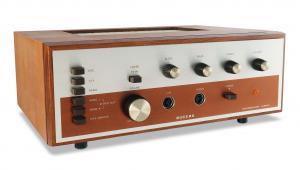Philips FA860 amplifier
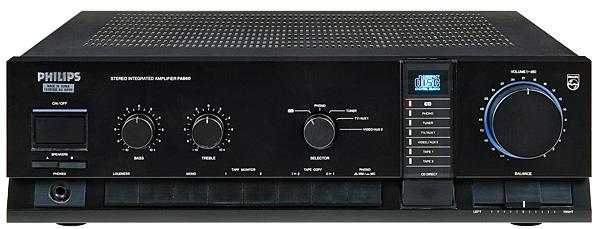
 Marketed by Philips yet made by Marantz, is this purposeful-looking integrated packed with premium components an unsung hero of hi-fi's past? It's time to find out...
Marketed by Philips yet made by Marantz, is this purposeful-looking integrated packed with premium components an unsung hero of hi-fi's past? It's time to find out...
Philips should have been a dominant player in the hi-fi arena, yet many of its products somehow missed the mark. Despite these repeated failures, every now and again the sleeping giant would wake from its slumbers and produce something miraculous – Compact Disc, Motional Feedback speakers – only to disappear until inspiration struck again.
The FA860 amplifier seen here is a product of one of the times Philips decided to try and take the lead at the top end of the hi-fi market, a move spurred by an important advance in CD player design.
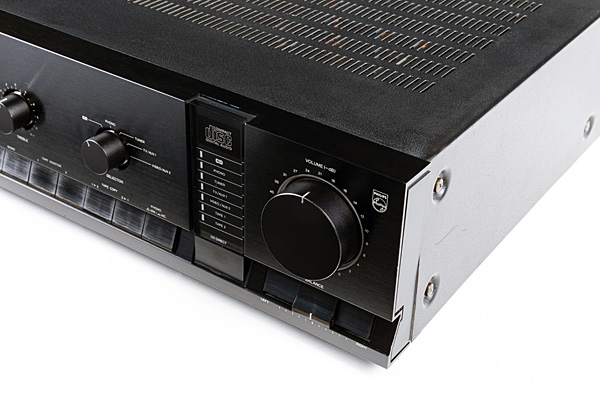
Numbers Up
The first Philips players used 14-bit DACs, unlike the 16-bit devices employed by the Japanese and it was generally agreed that in terms of sound quality, Philips led the field for the first few years. However, hi-fi marketing is all about numbers and so it was necessary for Philips to come up with a 16-bit DAC of its own. This emerged in 1985 as the TDA1541 chip, first seen in players such its CD450 [HFN Aug '14].
Basic players were all very well, but what was really needed was a flagship model to showcase the new technology. For this Philips turned to its Japanese subsidiary MJI (Marantz Japan, Inc) which created two new machines based around the TDA1541 DAC. These were the CD-94 for Marantz and the CD960 for Philips. Announced in 1986, both were identical aside from their external styling and combined Philips components and technology with Japanese design and assembly techniques.
To sell the CD960 effectively meant that supporting equipment of an appropriate level of quality was needed and again Philips turned to MJI. Two amplifiers were produced to complement the CD960: the FA860 providing 2x70W into 8ohm and the FA960 at 2x115W. Both were Marantz designs, sharing the basic structure and common blocks of circuitry from the same generation of Marantz models. But neither new amp was simply a re-badged Marantz. The FA860, for example, had no direct equivalent in the Marantz range and while it and the Marantz PM-50 shared the same basic output stage design, there were many differences. Nevertheless, while the FA860 may have said Philips on the front, it was very different proposition to that offered by a traditional Philips amplifier.
Plush Toys
No concessions were made to owners of Motional Feedback loudspeakers or older Philips tape recorders built to the DIN standards – everything was new. Gone was the gently futuristic European styling executed in soft-edged moulded plastic to be replaced with square-edged black satin alloy and painted sheet steel. Discarded were the wacky controls and experimental ergonomics of the past, replaced by a standard set of knobs that worked in a conventional and intuitive manner. And the previously preferred DIN connectors had vanished, with industry standard RCA sockets, and screw terminals for the loudspeakers now taking their place.
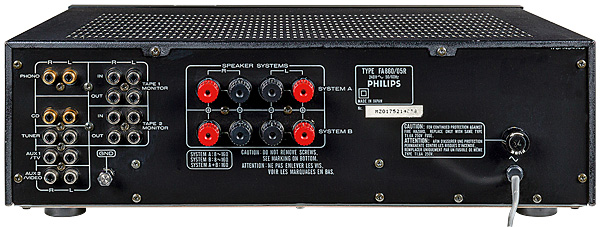
Philips had traditionally used many of its own electronic components to construct its equipment but this all changed with the FA860, which contained not a single Philips-sourced item. Instead, Marantz raided its toy box for the best it had to offer, coming up with an oversized mains transformer from Matsushita, power transistors from Toshiba, specialist ICs from Sanken, capacitors from Nichicon and a four-gang volume attenuator from ALPS.
This attenuator was one component that made the FA860 special. Nothing matching its quality could be found in any directly comparable Marantz design and its four independent sections made it possible to control the signal level at both the input and the output of the preamplifier. This arrangement eliminates the possibility of overload while giving the best possible noise performance, both key factors for an amp designed to make the most of CD.
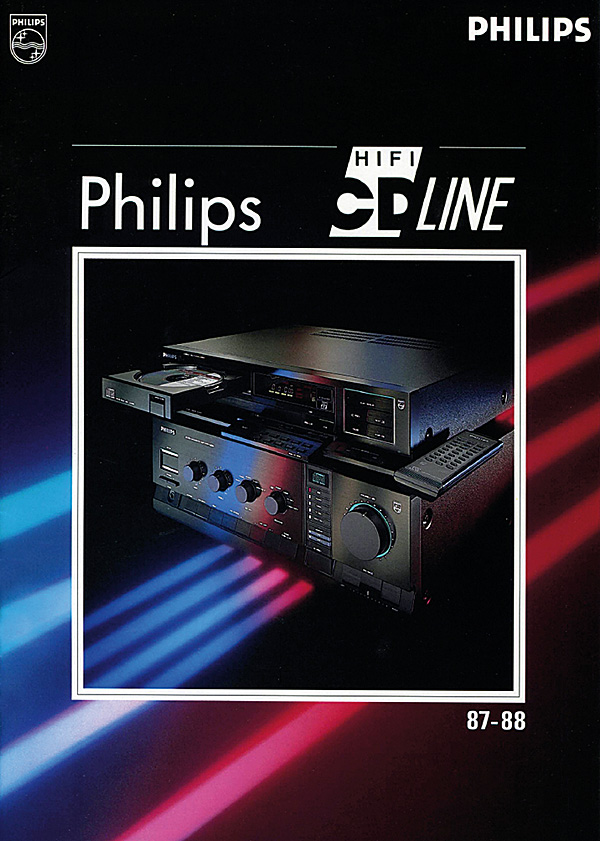
Direct Action
To improve the FA860's performance further, a 'CD Direct' option was also included. This bypassed much of the source selection and tone control circuitry, giving the clearest possible signal path. When not in 'CD Direct' mode, the FA860 offered the full range of facilities you would expect from a high-performance unit. Two tape loops, treble and bass controls, loudness compensation and the ability to dub between the tape decks in either direction were all included. The phono stage was built to a standard Marantz pattern and could be switched to suit MM or MC cartridges. The direct approach was also taken at the other end of the amplifier, with loudspeaker switching handled by relays mounted as closely as possible to the two pairs of oversized output terminals.
Another area where the FA860 scored over similar amps marketed by Marantz was the use of dual power supplies for the power amplifiers. Separate rectifier and reservoir circuits for the left and right channels were employed, mounted as closely as possible to the output transistors for minimum power loss. The traditional approach of a common power unit mounted remotely in the chassis from the power amplifiers was retained by Marantz for its PM-50 model.
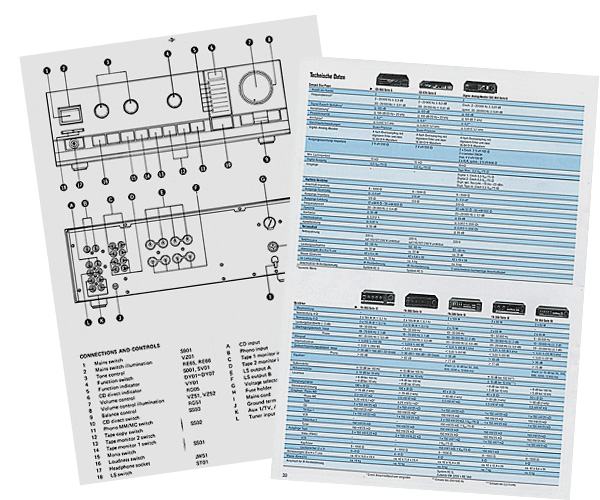
In use the FA860 feels like a high-quality Japanese amplifier. Top marks must go the volume control, which is quite the silkiest and smooth of this type I can recall. It is perfectly weighted, precise, silent and distributes the available gain optimally over the arc of its travel. The minor controls work well too, although the balance slider can be tricky to set accurately. And while the phono stage doesn't look too promising on paper, being a dual FET circuit followed by an IC gain stage, it works well, applying automatically the correct loadings of 47kohm and 100ohm in MM and MC modes, respectively.















